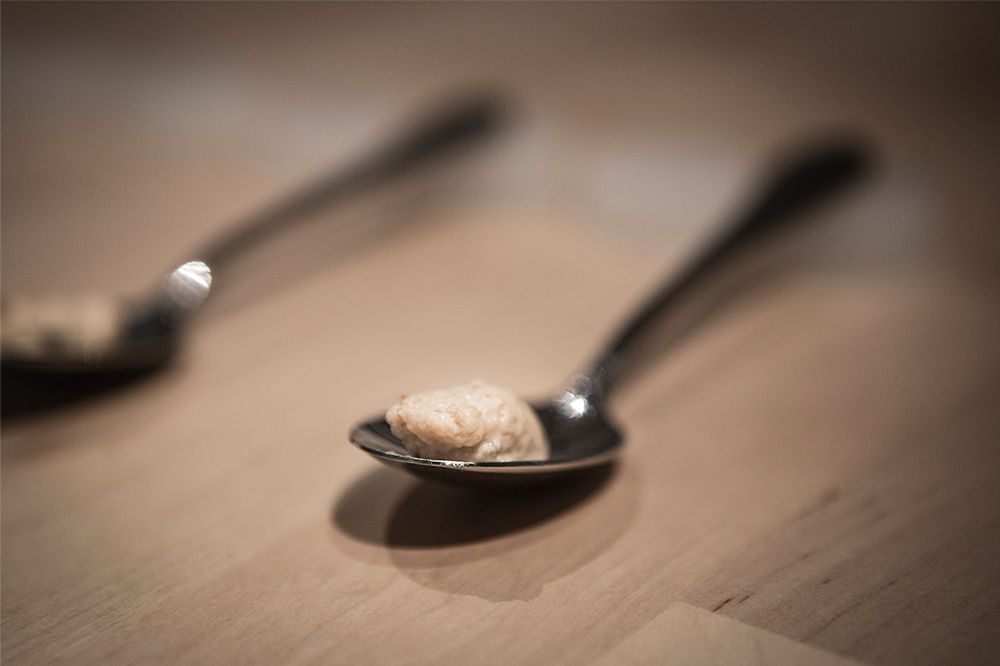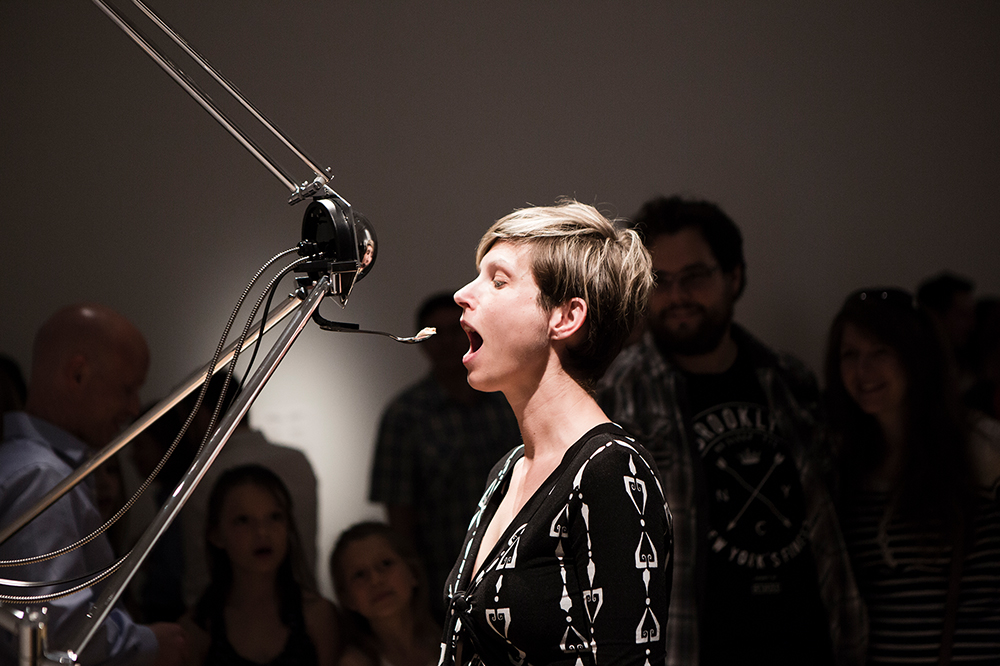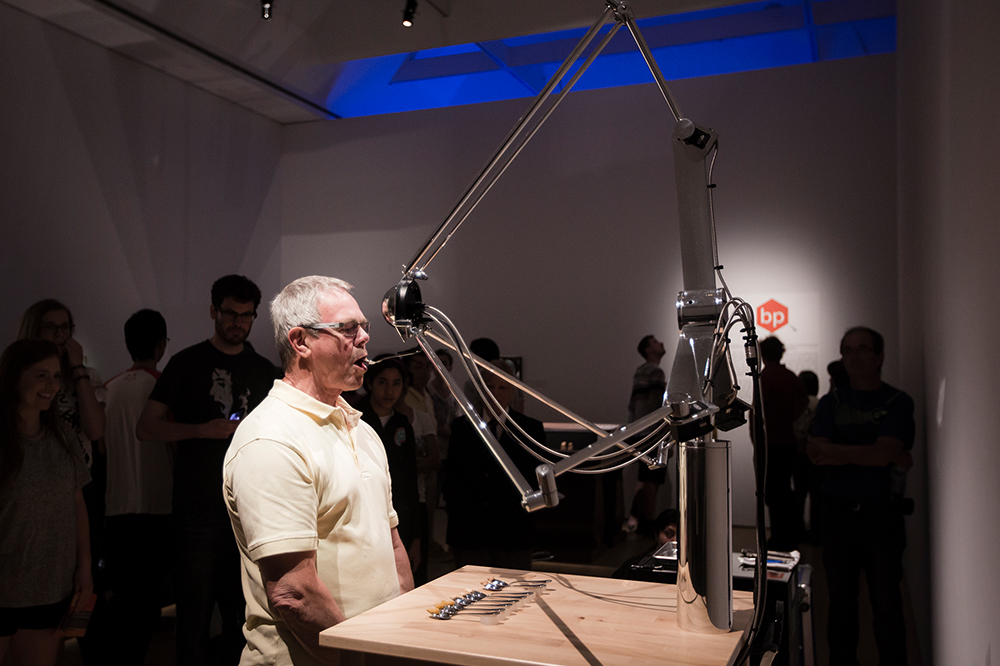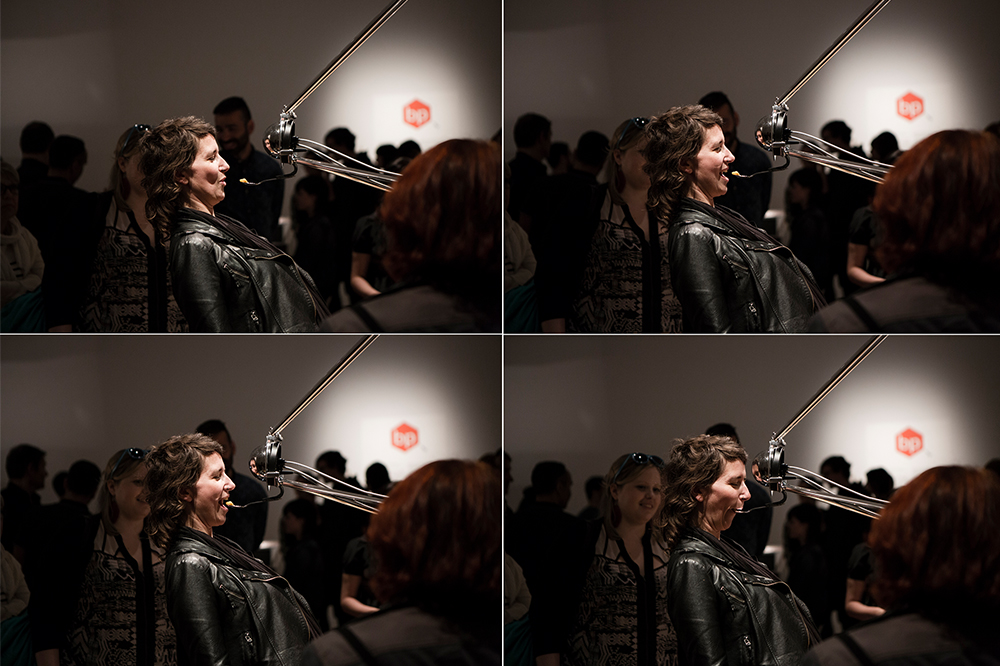Orchestrer la Perte / Perpetual Demotion
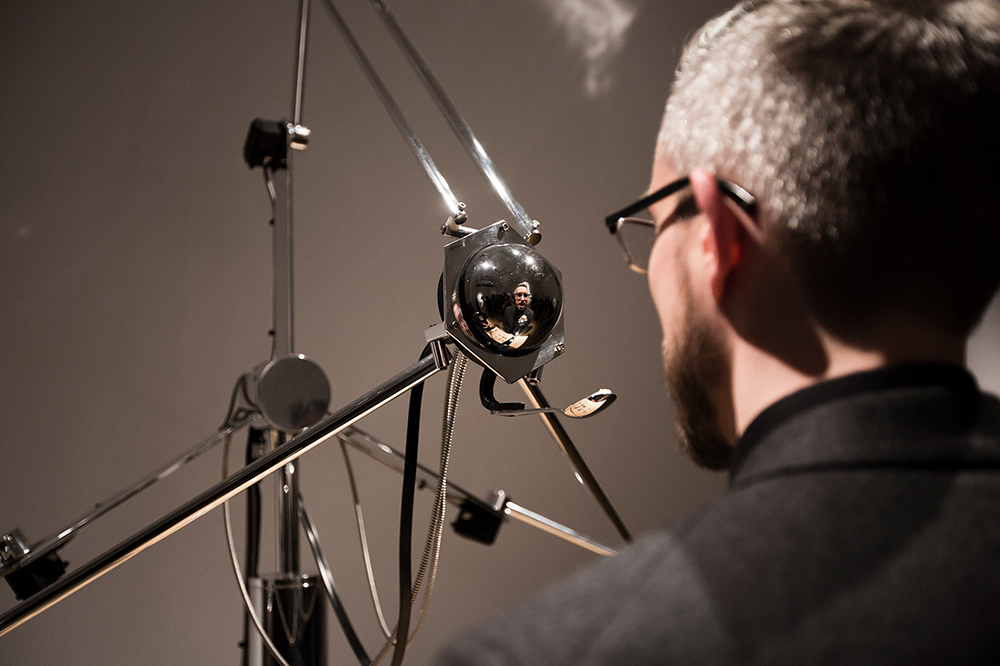
Orchestrer la perte / Perpetual Demotion is an interactive installation comprising a feeding robot, human eaters, bacterially activated foods, a refrigerator, and a human servant. OLP/PD draws attention to the systemic, performative nature of eating. At a broader scale, the project deals with the relations of influence and dependence between human actions and technologies, their residues, and the ‘natural’ world. The pivot point of fermented and pasteurized foods constitutes the pretext on which to center questions about humans and their social, economic, gastronomic, ecological, and political relations.
Acts of romantic and parental love, medical and geriatric care—these are the rare and intimate times when we let ourselves be fed by another. Private spaces, however, are increasingly being probed by external bodies, particularly in the digital realm; our metadata is mined, our movements tracked, and our socioaffective and psychological oscillations analyzed, all thanks to social media and our ‘intelligent’ portable devices. For better or for worse, the capacity of individuals to self-determine finds itself affected and infected by technologies both omnipresent and obscured.
Eating, as a relational act, brings together eater and eaten in variable roles. Incorporation and digestion reconfigure matter. While humans put ever more extensive synthetic and autonomous systems into the world, we also put them into ourselves, manipulating information, constructing cultures and biomes. Transhumanists have expressed hope for cybernetic hybrids, but the future is unclear. As visitors eat from the robot’s spoon, perhaps it engenders a time of reversals, when we have become food for the machine itself.
Credits
Original Idea and Concept
Simon Laroche
David Szanto
Acknowledgements
Jane Tingley
Elektra Festival
Photos
Gridspace
